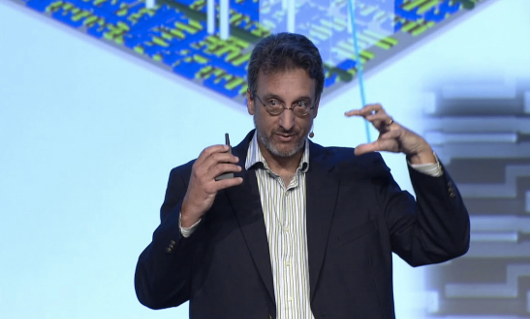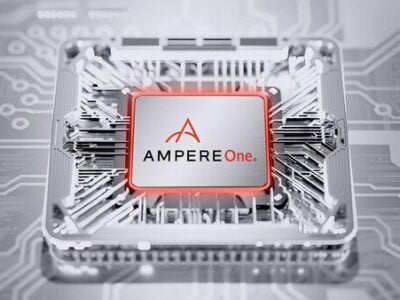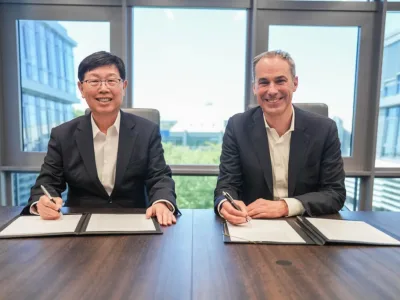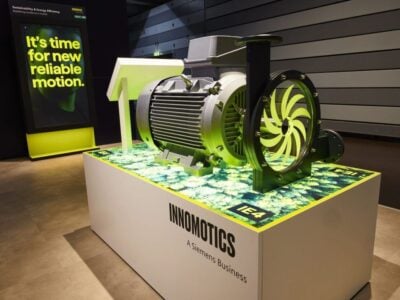
ARM forms spin-off to pursue CeRAM memory
A bulk-switching non-volatile memory has the potential to outperform resistive RAMs, which are usually based on the making and breaking of filamentary conduction paths between electrodes. According to Cerfe the so-called correlated electron RAM (CeRAM) also has the potential to rival magnetic RAM and SRAM, although further development work is required.
The company’s founders are some of the leaders of ARM’s research community and ARM is providing initial funding and taking a minority stake in the company although the exact terms and amount of funding have not been disclosed.
The company has developed out of a five-year research program conducted by ARM in partnership with Symetrix Corp. (Colorado Springs, Colo.) the originator of the CeRAM technology. It is based on metal-to-insulator state transitions, and their reversal, in transition metal oxides such as nickel oxide. In 2018 semiconductor manufacturing equipment maker Applied Materials Inc. was selected by DARPA to join the research on CeRAM (see Applied, ARM to develop CeRAM for neuromorphic applications).
“Over the last five years the ARM Research team has made great progress on advancing CeRAM technology,” said Simon Segars, CEO of ARM, in a statement. “As ARM strengthens focus on its core semiconductor IP business, we are putting the Cerfe Labs team in a more agile position to be successful in their work to bring this disruptive technology to market,” Segars added.
Cerfe’s founders include CEO Eric Hennenhoefer, a former vice president of research at ARM; CTO Greg Yeric, a former ARM Fellow; and vice president of research Lucian Shifren who was responsible for starting and running the materials and device research group which brought Symetrix and ARM together. A fourth co-founder is Kim Asal, also previously with ARM research, who serves as vice president of operations.

Greg Yeric speaking at the ARM Technology Conference in 2017.
“We are focusing our company on materials and device R&D with prototyping. We don’t ultimately see ourselves delivering memory products. We would expect that to be through a strategic partner,” said Yeric in email correspondence. “We think we have 12 to 18 months ahead of us to achieve the remaining key proof points that would make the clear case that this technology is ready to jump across the ‘lab-to-fab’ chasm,” he added.
Next: Bulk switching
Yeric said that ultimately a commercially-focused company would need to tune the CeRAM parameters according to specific needs, which could be related to performance, cost or temperature of operation. “We believe there is application across a wide range of process nodes including existing IoT nodes and future CMOS nodes,” said Yeric.
Cerfe is already in early-stage discussions with potential strategic partners, Yeric said. “As a materials and process IP company our plans do not include a huge capital infusion to build a fab. We expect that a partnership with someone who makes wafers for a living is the best way forward for the technology and our company.”
In addition to working on CeRAM with Symetrix – a long-standing research company formed by Professor Carlos Paz de Araujo of the University of Colorado – Cerfe Labs has been licensed to work on ferroelectic RAM technology, also developed by Symetrix, The Cerfe name is a contraction of correlated electron RAM and ferroelectric.
The primary claim made for the CeRAM technology is that it is based on a bulk-switching technology related to the carbon doping of nickel-oxide and other transition metal oxides and this brings a number of potential advantages over the numerous resistive RAM technologies that have been in development for the last couple of decades.
CeRAM is thought to work on the basis of Mott transitions – metal-to-insulator and insulator-to-metal – which can be triggered by an applied voltage and critical current density. The Mott state transition is well-known and documented and is due to electric field screening and electron localization. Cerfe sometimes refers to its technology as electron-orbital switching. The Mott transition is named after Nobel prize winning physicist Sir Nevill Mott (see Mysterious Mott transition could make better electronics).
This means that CeRAM devices do not require a forming process to create a conduction path, unlike other transition metal oxide resisitive RAMs. The phenomenon holds out the prospect of improved performance and superior reliability compared with the filamentary switching that underlies the majority of existing ReRAMs.
A key advantage is that an insulator-metal transition across the bulk of a material should allow switching down to the sub-nanometer dimensional scale. Unlike filamentary switches it does not rely on the movement of material which promotes wear-out and reliability issues, and the Mott transition is inherently fast.
Next: Four materials
Yeric said that the research team has achieved sub-2ns switching and is confident of getting below 1ns. “Given most other strongly correlated electron (SCE) materials have shown switching of less than 100fs, it is going to be mostly determined by the CMOS access circuit design,” he said.
Ultimately high-speed switching of non-volatile memories could allow the replacement of SRAM in logic circuits, which in turn could have an impact on processor architecture (see ARM’s Greg Yeric on memory, logic and making it). It is also potentially powerful for compute-in-memory neuromorphic computing architectures.
Cerfe Labs has an experienced team and has been granted a comprehensive IP portfolio consisting of over 150 US patents. So far the research has got down to a 47nm-diameter dot size and several transition metal materials and dopant systems are now being investigated. “We have more than four CeRAM materials proven, one of which is more attractive in the long term than nickel-oxide,” said Yeric while declining to reveal details of the material systems. Nonetheless with decreasing geometry it is difficult to be absolutely sure of the bulk switching effect. “Until we have something definitive like the X-ray confirmation, we keep touching different parts of the elephant and every time it is confirmed an elephant,” said Yeric.
ARM has previously invested in 300mm wafer processing equipment sited with Symetrix to help with research but ultimately to prove the technology down to leading-edge nodes will require partners. The IMEC research institute (Leuven, Belgium) has been doing some processing of wafers for the research team.
In 2014, when Professor Araujo had already been working on the technology for about five years, the claim was that with the nickel oxide implementation, the state was robust up to 400 degrees C and could be read with a voltage of 0.2 volts. Devices, albeit at large geometry, were reported to have 10^12 cycles read endurance.
Symetrix welcomed the formation of Cerfe Labs and said CeRAM operates from below 2K to 400 degrees C and is the first memory to operate over such a wide temperature range without degradation. The programming voltages are of 0.6V and 1.2V. Symetrix re-iterated the cycling endurance of 10^12 cycles and said that the technology is being developed with IMEC with a goal of process integration compatible with sub-14nm CMOS.
“CeRAM will usher in an era of quantum devices based on the practical application of the correlated electron phenomenon and reversible phase change,” said Professor Araujo.
Next: Roadmap of applications
Yeric said the CeRAM technology would probably address embedded flash first but with much lower cost and power consumption. It could then head towards embedded MRAM/SRAM densities. “It is often easiest for ’emerging’ technologies to find footing in unserved niches, which I expect for CeRAM might mean starting in extreme high temperature or extreme low-cost embodiments. But a fab with SRAM-replacement goals may want to short-circuit that process,” he said.
Yeric indicated that over the next 12 to 18 months Cerfe Labs expects to prove devices with increasingly small geometry operate as bulk switches and then verify with commercial manufacturers the reliability and repeatability of the device in fab-compatible integration at fab dimensions. “Additionally, we plan to highlight unique features of the technology which we expect to include high temperature operation above any other NVM technology and probably beyond silicon CMOS itself,” Yeric concluded.
Market research firm Objective Analysis published a report in June 2020 on the emerging memory market entitled: Emerging Memories Find Their Direction
Related links and articles:
News articles:
ARM’s Greg Yeric on memory, logic and making it
Applied, ARM to develop CeRAM for neuromorphic applications
ARM, Applied, seek to replace SRAM with MRAM
Mysterious Mott transition could make better electronics
ARM’s turn to non-volatile memory is right move
Selector transistor promises broad impact across memory types
Second Chinese chipmaker signs up for Weebit’s ReRAM
TSMC offers 22nm RRAM, taking MRAM on to 16nm
 If you enjoyed this article, you will like the following ones: don't miss them by subscribing to :
eeNews on Google News
If you enjoyed this article, you will like the following ones: don't miss them by subscribing to :
eeNews on Google News




